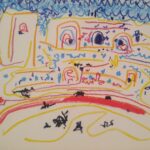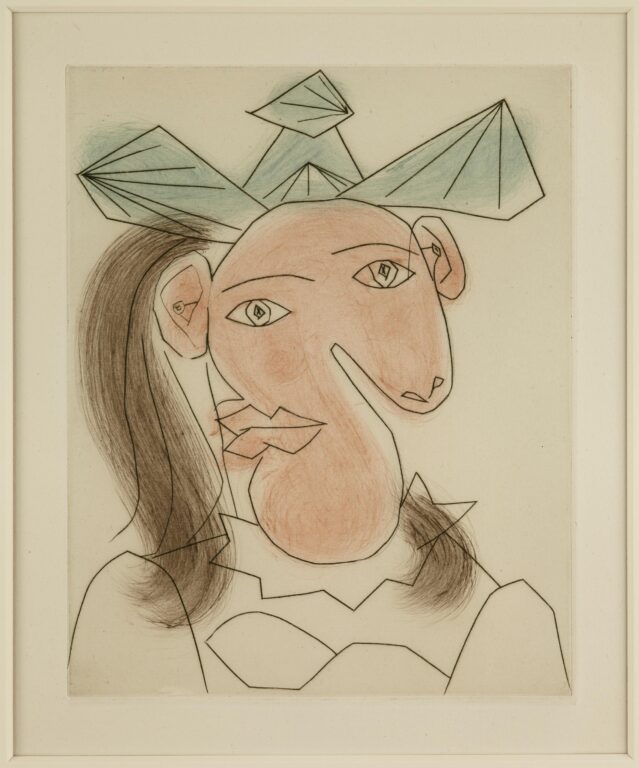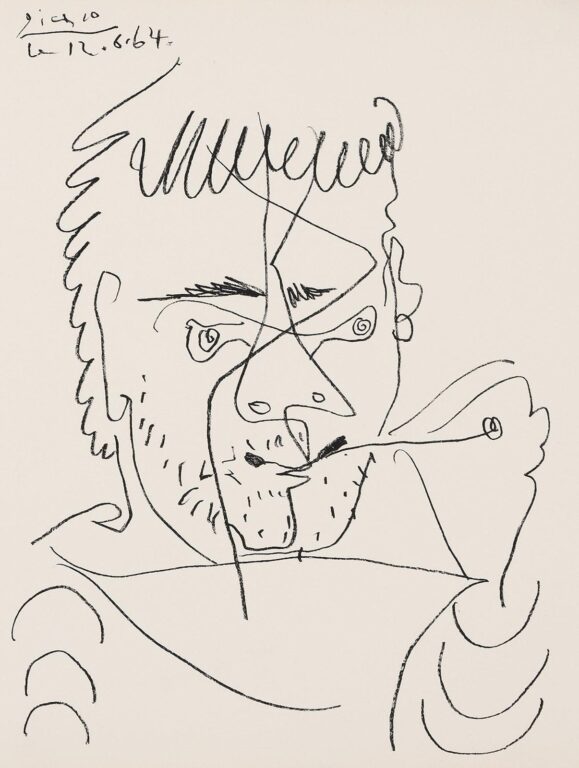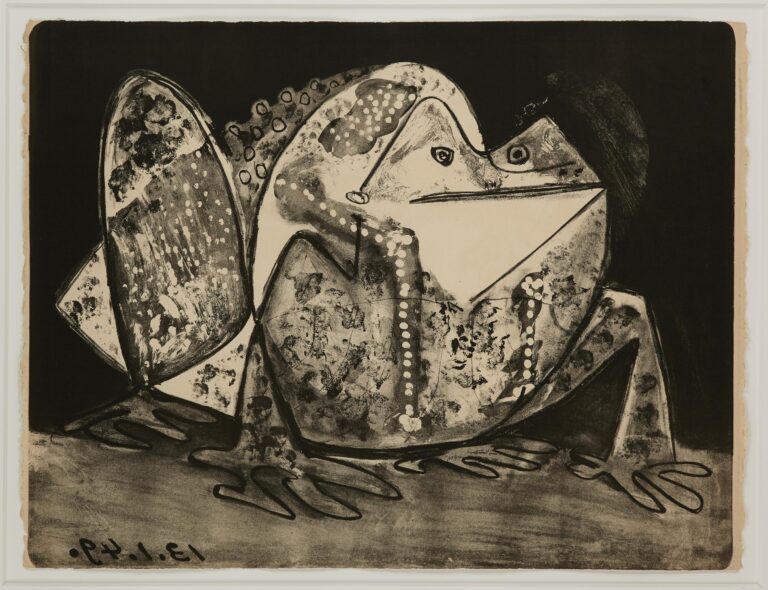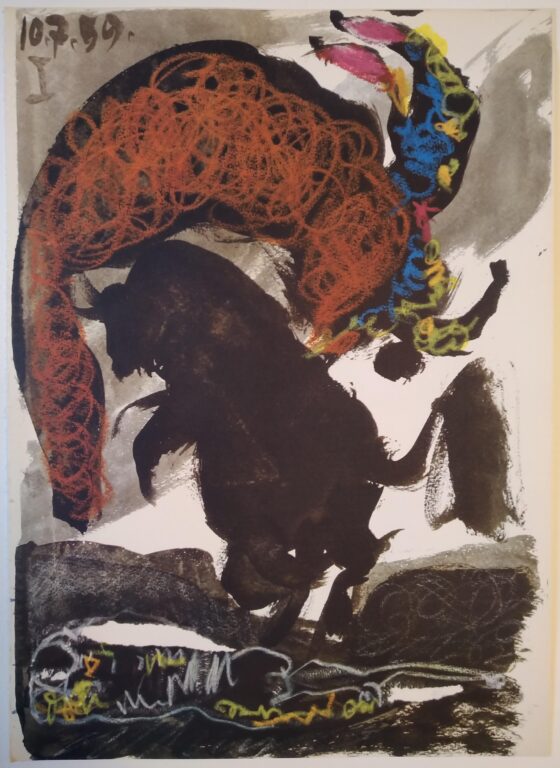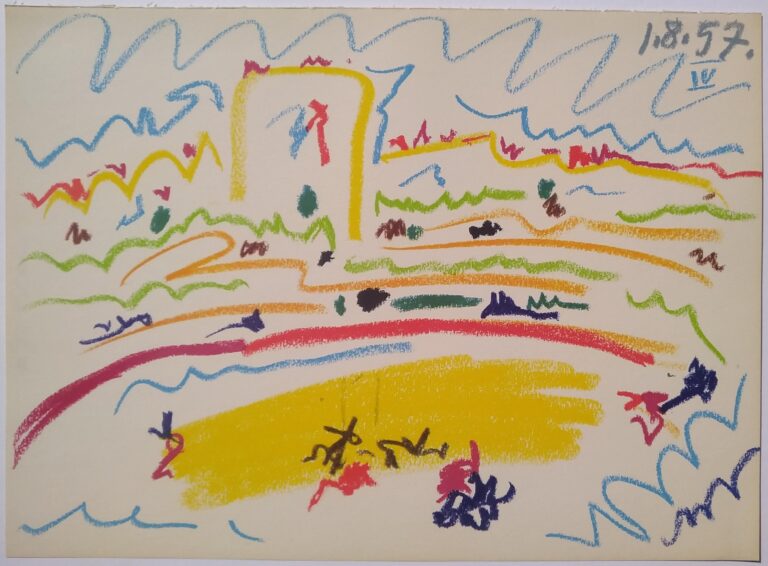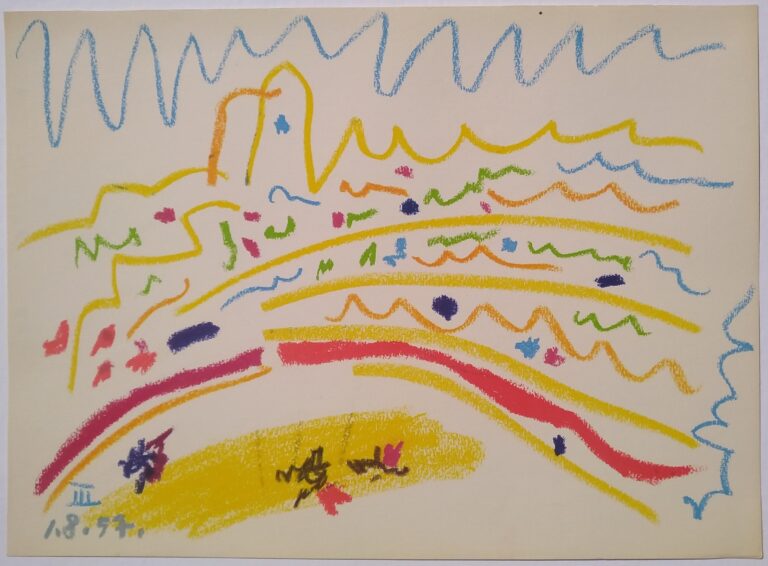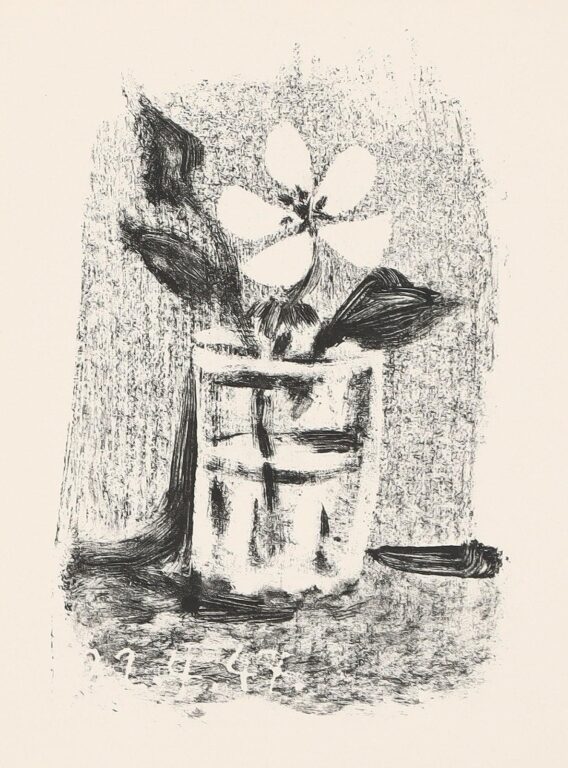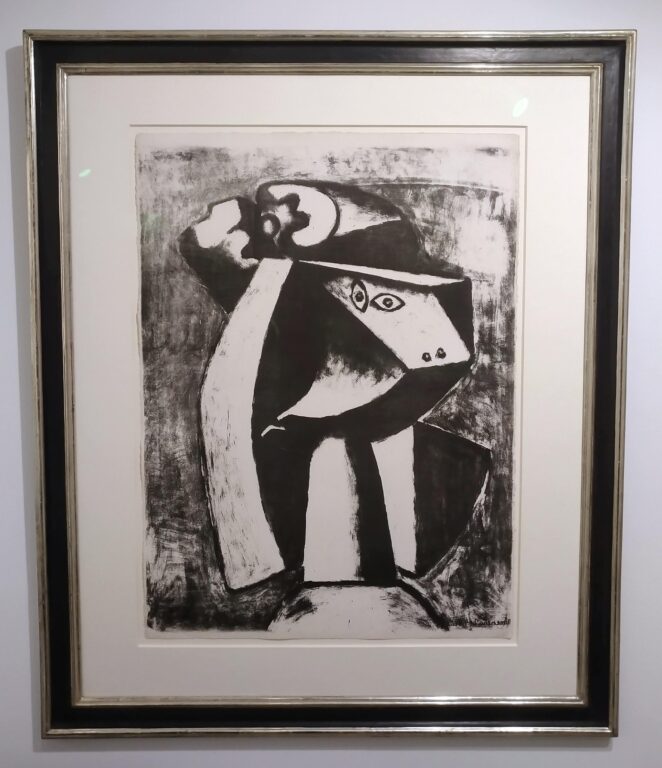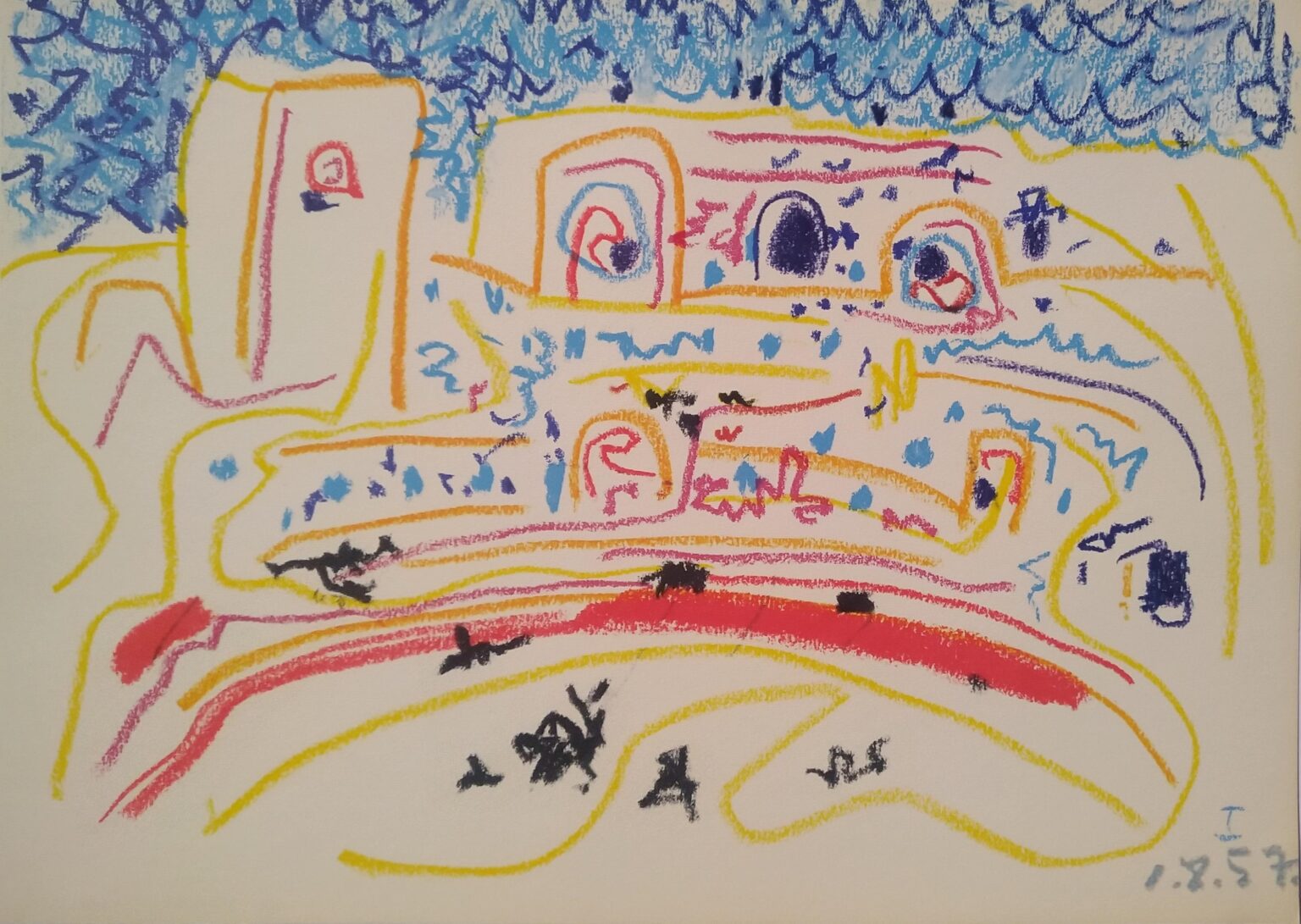
- From: Toros y Toreros. Texte de Luis Miguel Dominguin et une étude de Georges Boudaille.
- 1961
- Lithographie auf Velin
- 37 x 27 cm
Picasso écrivit un jour à Luis Miguel Dominguin : “Si je n’avais été peintre, j’aurais aimé être picador.” Picasso ne devint jamais picador mais l’amitié qu’il noua avec le toréador fut peut-être pour lui une manière de vivre ce rêve par procuration. Les deux hommes se rencontrent en 1950 grâce à Jean Cocteau.
Et comme le rappelle Aleth Jourdan, la conservatrice en chef du Musée des Cultures Taurines, Picasso n’est pas emballé par Dominguin et sa façon de toréer. Mais ses premières réticences disparaissent vite et une véritable amitié se noue qui durera une quinzaine d’années, à tel point que les deux hommes et leur famille deviennent intimes (Picasso sera le parrain de Paola, la fille de Dominguin)
Parmi les témoignages de l’amitié entre les deux hommes présentés dans l’exposition, il a aussi cet exemplaire de tête (traduisez de luxe) de “Toros y Toreros”, énorme ouvrage paru au Cercle d’art en 1963 qui regroupe 3 carnets de dessins réalisés par Picasso entre 1950 et 1960.
Dominguin a écrit la préface de ce livre où l’on peut lire ceci : “Pablo s’intéresse à tout ce que je fais. Il est impatient de mes succès possibles. Mais il serait heureux le jour où il apprendrait ma retraite… ou ma mort dans l’arène. Pablo pleurerait: ‘Il a accompli son destin.’ C’est juste. La mort est promise. Et la corrida n’est que son cérémonial plus ou moins heureusement mis en scène.”
Toros Y Toreros is a book of bullfighting drawings, published in 1961 with text by bullfighter Luis Miguel Dominguin (translated from Spanish by Georges Franck) and an essay by Georges Boudaille. The title of the book is handwritten by the artist.
Pablo Picasso created the cover page and illustrations using a series of three sketchbooks. The technique utilized an quasi systematic use of brush ink wash. The book is reproduced on Arches paper. The drawings were printed in Mourlot Studio, the famous lithographic print house that worked with Picasso, among other artists such as Matisse and Chagall in Paris, France. The text was printed and book bound in The Netherlands for distribution within Europe.
Picasso and Dominguin met in 1950, introduced to each other by Jean Cocteau. The book begins with an anecdote recounted by Luis Miguel Dominguin: “Pablo phoned me from Cannes. Some time ago he wanted me, he told me, to write something for one of his books that was about to be published. I asked him if it was a prologue or a comment, whether to speak of painting or polar star. He told me that any of these themes would do the trick.”
The book consists of 32 pages of text followed by Picasso’s illustrations which reproduce three sketchbooks from 1959. The works deal with all stages of bullfighting and Georges Boudaille highlights Picasso’s persevering loyalty to portraying the theme of bullfighting since 1890. The plates are black & white, sepia and color, and many are single-sided. Part of the sketchbooks have never been found (the drawings of March 2 and 3, notably representing Jacqueline on horseback). Among the most astonishing images, there is a Christ on the cross saving a picador from death.
These drawings by Picasso covered a period from 1950 to 1960, during which time he enjoyed seeing Dominguin bullfight in the arenas of Nîmes, Arles, Frejus and Vallauris. The leading copies of this publication contain a series of reproductions of color drawings selected from the first two notebooks, as well as a lithograph of February 7, 1961 Pablo Picasso created the cover page and illustrations using a series of three sketchbooks. The technique utilized a quasi systematic use of brush ink wash.
Et comme le rappelle Aleth Jourdan, la conservatrice en chef du Musée des Cultures Taurines, Picasso n’est pas emballé par Dominguin et sa façon de toréer. Mais ses premières réticences disparaissent vite et une véritable amitié se noue qui durera une quinzaine d’années, à tel point que les deux hommes et leur famille deviennent intimes (Picasso sera le parrain de Paola, la fille de Dominguin)
Parmi les témoignages de l’amitié entre les deux hommes présentés dans l’exposition, il a aussi cet exemplaire de tête (traduisez de luxe) de “Toros y Toreros”, énorme ouvrage paru au Cercle d’art en 1963 qui regroupe 3 carnets de dessins réalisés par Picasso entre 1950 et 1960.
Dominguin a écrit la préface de ce livre où l’on peut lire ceci : “Pablo s’intéresse à tout ce que je fais. Il est impatient de mes succès possibles. Mais il serait heureux le jour où il apprendrait ma retraite… ou ma mort dans l’arène. Pablo pleurerait: ‘Il a accompli son destin.’ C’est juste. La mort est promise. Et la corrida n’est que son cérémonial plus ou moins heureusement mis en scène.”
Toros Y Toreros is a book of bullfighting drawings, published in 1961 with text by bullfighter Luis Miguel Dominguin (translated from Spanish by Georges Franck) and an essay by Georges Boudaille. The title of the book is handwritten by the artist.
Pablo Picasso created the cover page and illustrations using a series of three sketchbooks. The technique utilized an quasi systematic use of brush ink wash. The book is reproduced on Arches paper. The drawings were printed in Mourlot Studio, the famous lithographic print house that worked with Picasso, among other artists such as Matisse and Chagall in Paris, France. The text was printed and book bound in The Netherlands for distribution within Europe.
Picasso and Dominguin met in 1950, introduced to each other by Jean Cocteau. The book begins with an anecdote recounted by Luis Miguel Dominguin: “Pablo phoned me from Cannes. Some time ago he wanted me, he told me, to write something for one of his books that was about to be published. I asked him if it was a prologue or a comment, whether to speak of painting or polar star. He told me that any of these themes would do the trick.”
The book consists of 32 pages of text followed by Picasso’s illustrations which reproduce three sketchbooks from 1959. The works deal with all stages of bullfighting and Georges Boudaille highlights Picasso’s persevering loyalty to portraying the theme of bullfighting since 1890. The plates are black & white, sepia and color, and many are single-sided. Part of the sketchbooks have never been found (the drawings of March 2 and 3, notably representing Jacqueline on horseback). Among the most astonishing images, there is a Christ on the cross saving a picador from death.
These drawings by Picasso covered a period from 1950 to 1960, during which time he enjoyed seeing Dominguin bullfight in the arenas of Nîmes, Arles, Frejus and Vallauris. The leading copies of this publication contain a series of reproductions of color drawings selected from the first two notebooks, as well as a lithograph of February 7, 1961 Pablo Picasso created the cover page and illustrations using a series of three sketchbooks. The technique utilized a quasi systematic use of brush ink wash.
- Tête de Femme No.7, Portrait de Dora Maar
- 1939 - 1939
- Farb-Radierung (Kaltnadel) und Sandpapier auf Bütten (Montval) · Colour etching (dry point) and sandpaper on laid paper (Montval)
- 44.45 x 33.65 cm
- Le Fumeur
- 1964/1965 (Erscheinungsdatum)
- Lithographie auf chamoisfarbenem BFK Rives. Auf der rechten Seite eines ungefalteten Bogens
- 31.5 x 50 cm
- Le Crapaud (the Toad)
- 1949
- Lithograph on papier Arches
- 49,5 x 63,8 cm.
- From: Toros y Toreros. Texte de Luis Miguel Dominguin et une étude de Georges Boudaille.
- 1961
- Lithographie auf Velin
- 37 x 27 cm
- From: Toros y Toreros. Texte de Luis Miguel Dominguin et une étude de Georges Boudaille.
- 1961
- Lithographie auf Velin
- 37 x 27 cm
- From: Toros y Toreros. Texte de Luis Miguel Dominguin et une étude de Georges Boudaille.
- 1961
- Lithographie auf Velin
- 37 x 27 cm
- Fleurs dans un Verre N° 6
- 1947/1950 (Erscheinungsdatum)
- Lithographie auf chamoisfarbenem Marais-Vélin. Auf der linken Seite eines ungefalteten Bogens
- 32.5 x 51.7 cm
- Figure
- 1947
- Zinkographie auf festem Arches Velin mit Trockenstempel - Zincograph on Arches wove paper with dry-stamp (Mourlot: ink and wash drawing composition on zinc)
- 76 x 56.7 cm
